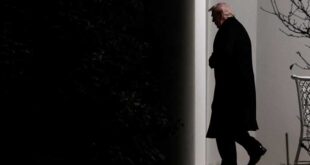In 2022, when the Fed realized that it had been late in addressing the inflation surge, it raised interest rates in twenty-five, fifty, or even seventy-five-basis-point increments to regain inflation control. We have to hope that when the Fed next meets on September 17-18, it realizes that it has fallen behind the curve and starts reducing interest rates as aggressively as it raised them.
At a time when the economy is showing clear signs of slowing and when the banking system is facing serious problems with its commercial real estate loan portfolio, the Powell Fed clings to its high interest rate policy to bring down inflation. This heightens the chances that the economy will be in for some rough sledding next year and that we could have another round of the regional bank crisis.
Anyone doubting that the economy is slowing has not been paying attention to the marked loosening in labor market conditions. Job openings have been plunging, the pace of employment gains has been moderating, and the unemployment rate has increased by more than half a percentage point to 4.2 percent. Further underlying this point is the fact that the pace of employment gains has slowed from well over 200,000 jobs a month at the beginning of 2024 to 89,000 in July and 142,000 in August.
Other signs of economic slowing include a slump in manufacturing activity, a drop in housing investment, and multiple warnings from many enterprises that the U.S. consumer appears to be tapped out. Households have run through their government COVID checks and are suffering under the burden of high interest rates, which is inducing them to be more careful with their spending decisions.
Anyone doubting that the banks are likely to be under major pressure next year has not been paying attention to the slow-motion trainwreck presently underway in the real commercial property sector.
Commercial property prices are plunging in most major cities. They are doing so as vacancy rates keep rising to new heights, and large numbers of workers are now being allowed to work at least part-time from home. These lower prices, together with the Fed’s high interest rates, are making it difficult for property developers to keep current on their mortgage payments. They are already giving rise to an increase in commercial property loan defaults.
Over the next year, some $1 trillion in commercial property loans fall due. This could give rise to a wave of defaults that could be particularly problematic for the regional banks, which hold a large amount of these loans on their balance sheets. These banks are not in a position to absorb property loan defaults at a time when they are nursing substantial mark-to-market losses on their loan and bond portfolios as a result of high interest rates.
At the same time that the economy is slowing and banking sector strains appear to be building, inflation continues to moderate. Indeed, measured by the core personal consumption expenditures price index, the Fed’s favored inflation gauge, inflation has now come down to 2.5 percent. That is close enough to the Fed’s 2 percent inflation benchmark.
While a slowing economy, building strains in the banking system, and rapidly moderating inflation would have been reason enough for the Fed to start cutting interest rates, there is yet another reason. The restrictive effect of interest rates increases as inflation comes down. At present, the Fed’s interest rate exceeds inflation by 3 percent after a prolonged period when inflation exceeded the interest rate.
In 2022, when the Fed realized that it had been late in addressing the inflation surge, it raised interest rates in twenty-five, fifty, or even seventy-five-basis-point increments to regain inflation control. We have to hope that when the Fed next meets on September 17-18, it realizes that it has fallen behind the curve and starts reducing interest rates as aggressively as it raised them. Maybe then we can hope that the Fed will avoid a hard economic landing next year.
About the Author: Dr. Desmond Lachman
Desmond Lachman is a Senior Fellow at the American Enterprise Institute and served as a deputy director in the International Monetary Fund’s Policy Development and Review Department and the chief emerging-market economic strategist at Salomon Smith Barney.
Image Credit: Shutterstock.
 Geostrategic Media Political Commentary, Analysis, Security, Defense
Geostrategic Media Political Commentary, Analysis, Security, Defense





